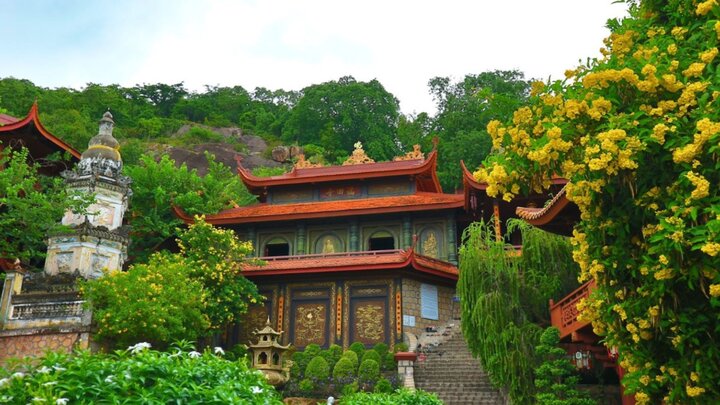1. What is Hang Pagoda Hai Phong? One or two pagodas?
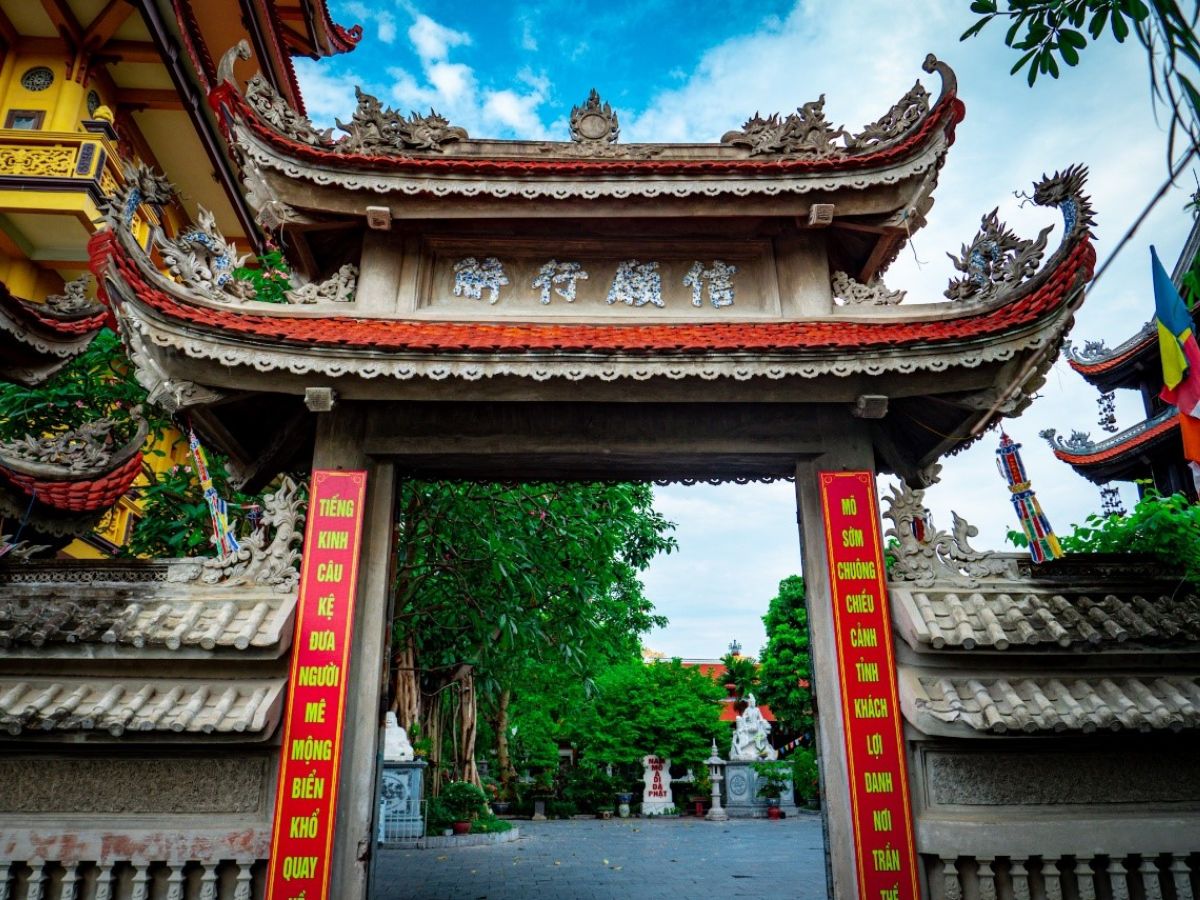
Hai Phong Hang Pagoda has a long history of the city. (Source: Collected)
Hai Phong Hang Pagoda is a phrase that often confuses many tourists, because in reality there are two different pagodas with similar names: Du Hang Pagoda in the city center and Hang Pagoda (Coc Tu) in Do Son district. Both are sacred structures, closely linked to the long history and Buddhist culture of Hai Phong, but each place carries its own distinct imprint in terms of architecture, location, and spiritual value.
1.1. Which pagoda does Hai Phong Hang Pagoda usually refer to?
When mentioning Hai Phong Hang Pagoda , most locals immediately think of Du Hang Pagoda, also known as Phuc Lam Tu, located on Hang Street, Le Chan. This is one of the ancient pagodas with a long history in the city, dating back to the Tien Le period.
The name “Hang Pagoda” originates from the Du Hang Kenh địa danh, in which the word “Hang” signifies a fertile and prosperous land. The pagoda is located at 121 Hang Street, Ho Nam Ward, and is a familiar destination for locals during Buddhist festivals or full moon days.
However, many tourists easily confuse it with Hang Pagoda (Coc Tu) in Do Son. This pagoda is notable for its architecture built within a natural cave, linked to the legend of an Indian monk and the early Buddhist milestones in Vietnam. The confusion arises from the similar pronunciation between “Hang” and “Hang”, while each pagoda possesses its own distinct location, architecture, and historical value.
1.2. Quick Distinction: Du Hang Pagoda and Hang Pagoda
To distinguish Du Hang Pagoda from Hai Phong Hang Pagoda , tourists should pay attention to some prominent identifying points. Du Hang Pagoda is located right in the center of Hai Phong city, easily accessible by motorbike, car, or public transport. The pagoda attracts with its pure Vietnamese architecture, including a bell tower, stupa garden, and spacious courtyard, making it a familiar destination for locals and tourists alike.
Meanwhile, Hang Pagoda (Coc Tu) is located on Van Tac Mountain, Do Son, about 20 km from the city center. Hang Pagoda stands out with its majestic natural scenery, and a 25m long cave creating a unique spiritual space, unlike traditional pagodas.
Regarding its formation history, Hang Pagoda is believed to have appeared from the 2nd century BC, related to monk Ban from Thien Truc spreading Buddhism into Vietnam. Conversely, Du Hang Pagoda was established during the Tien Le dynasty (980-1009) and was once the center of the Truc Lam Zen school in Hai Phong, playing an important role in the local spiritual and cultural life.
2. Discover Hang Pagoda (Du Hang Le Chan Pagoda) – Phuc Lam Tu
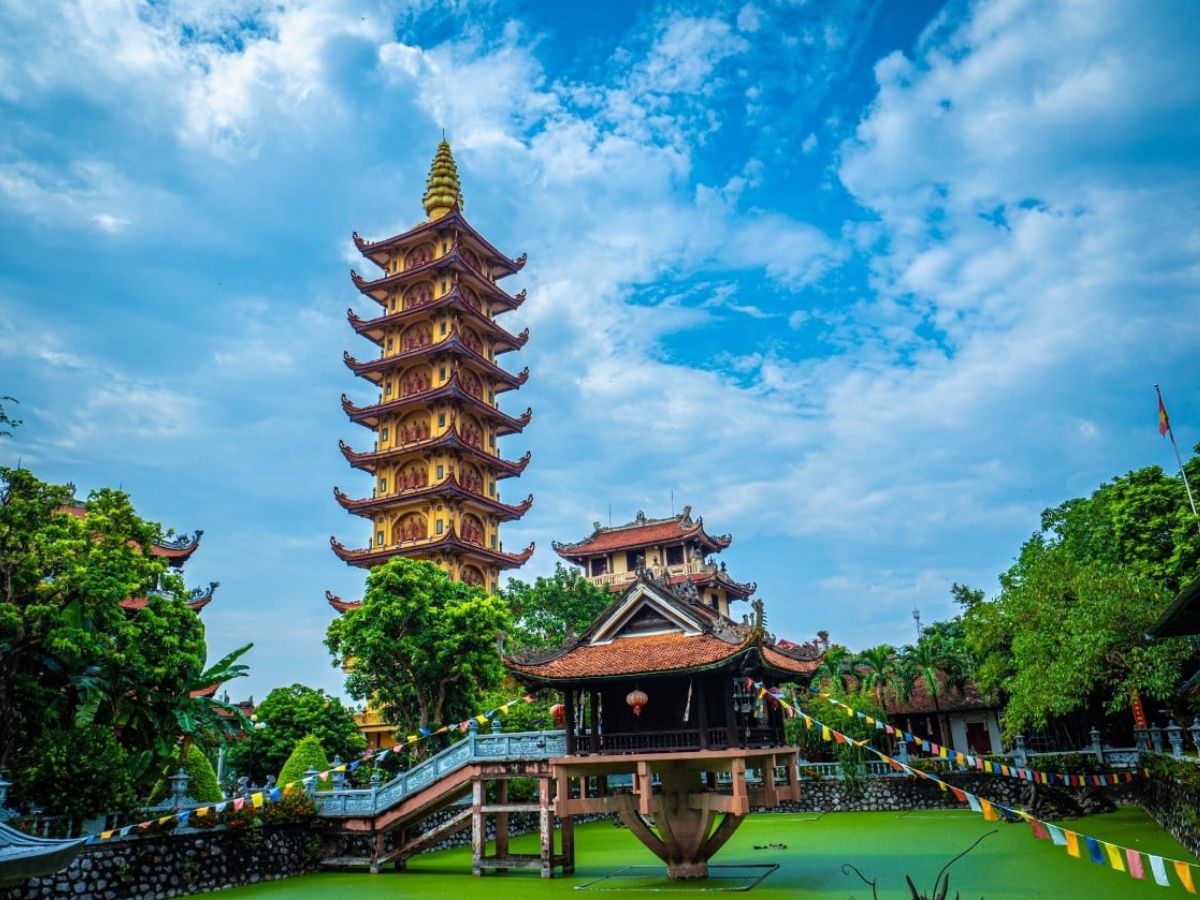
Hang Pagoda Hai Phong is a local historical – cultural relic. (Source: Collected)
Hang Pagoda Hai Phong , also known as Du Hang Pagoda – Phuc Lam Tu, is one of the most ancient and sacred pagodas in the Port City. This place is not only a familiar pilgrimage site for locals but also an important historical – cultural relic, preserving the imprint of the Truc Lam Zen sect and the beauty of traditional Vietnamese Buddhist architecture.
2.1. Location, how to get to Hang Pagoda Hai Phong
Hang Pagoda Hai Phong is located at 121 Hang Street, Le Chan, about 3 km from the city center, convenient for all visitors.
Getting to the pagoda is very easy, especially for those starting from the Hai Phong Opera House area, taking only about 10 minutes by taxi or motorbike following the route Tran Hung Dao – Phan Dang Luu – Hang Street.
In addition, city bus routes also stop near the Hang Pagoda intersection, suitable for those who prefer public transport. There are many motorbike and car parking areas around the pagoda with fees ranging from 10,000 – 30,000 VND depending on the vehicle type, ensuring convenience for visitors during their tour.
2.2. History and traditions of Du Hang Pagoda
Phuc Lam Tu, also known as Hang Pagoda Hai Phong , was built during the Tien Le Dynasty (around 980-1009), associated with the development history of the Truc Lam Yen Tu Zen sect. The pagoda once welcomed famous patriarchs, including Tran Nhan Tong, who stopped to preach here.
Du Hang Pagoda has undergone many major and minor renovations, notably the renovation in 1672 during the Hau Le dynasty, followed by renovations in 1899 under King Thanh Thai, in 1917, and many other times in the 20th century, preserving its traditional architecture and historical value.
A special feature of the pagoda is that it was once a place for secret revolutionary activities of the Communist Party of Vietnam before the August 1945 Revolution, contributing to enriching its historical significance alongside its spiritual value.
Today, Du Hang Pagoda is recognized as a national historical relic, attracting a large number of Buddhists and visitors for sightseeing and worship, especially during the Truc Lam Ancestor's Death Anniversary (November 2-3 lunar calendar) and many other traditional festivals, becoming a prominent cultural – spiritual destination in Hai Phong.
2.3. Architecture and space of Hang Pagoda Hai Phong
Upon entering Hang Pagoda Hai Phong , visitors are immediately impressed by its distinctive traditional Vietnamese architecture: sturdy wooden pillars, intricate carved patterns, and majestic, gracefully curved pagoda roofs. The bell tower, the main hall, and the surrounding architectural elements create a whole that is both tranquil and solemn.
The pagoda still preserves many valuable artifacts from the Le and Tran periods, such as finely carved Buddha statues, statues of the Truc Lam Three Patriarchs, and ancient bronze bells. Stone steles mark many historical events, reflecting the flow of cultural – spiritual development of Hai Phong city.
The pagoda grounds are spacious, with a quiet stupa garden and ancient trees hundreds of years old, offering a relaxing atmosphere. This is an ideal place for those who love Buddhist architectural art and want to capture memorable moments through impressive photos.
2.4. Spiritual cultural values and outstanding activities
Hang Pagoda Hai Phong is an important religious center of the port city, notable for its distinctive Buddhist rituals and activities. Annually, the Truc Lam Ancestor's Death Anniversary takes place on the 2nd and 3rd of the 11th lunar month, attracting a large number of Buddhists from all over. Besides, the Vu Lan filial piety ceremony is also solemnly organized, with the pagoda space filled with incense and echoing chants, creating a pure and profound feeling.
In addition to major holidays, the pagoda regularly organizes Buddhist dharma talks, short-term retreats, and volunteer programs, contributing to connecting the Buddhist community. These activities not only preserve traditional spiritual values but also create a harmonious bridge between modern cultural life and Buddhist spirit.
3. Experience Hang Pagoda Hai Phong (Coc Tu – Do Son)
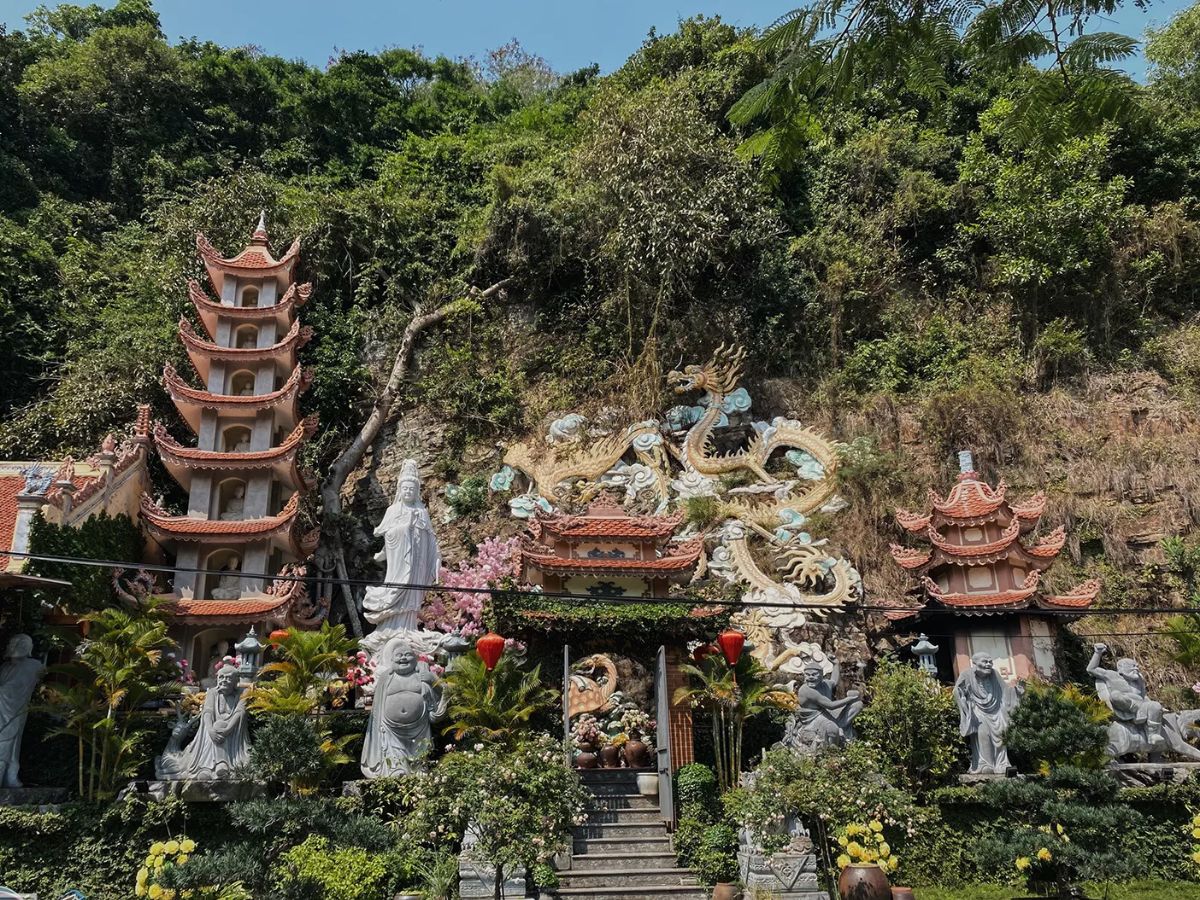
Cave Pagoda Hai Phong is an ancient pagoda with unique architecture. (Source: Collected)
Cave Pagoda Hai Phong (Coc Tu – Do Son) is one of the oldest pagodas in Vietnam, famous for its architecture nestled deep within a rocky mountain, facing the East Sea. This place not only holds sacred spiritual value but also serves as a vivid testament to the journey of Buddhism's introduction and development in Vietnam, blending majestic natural beauty with ancient cultural imprints.
3.1. Location and directions to Cave Pagoda Hai Phong
Coc Tu ( Cave Pagoda Hai Phong ) is located in Area 1, Do Son, about 20 km southeast of the city center. The pagoda is situated on the slope of Van Tac mountain, facing the East Sea, offering visitors a panoramic view of the majestic combination of mountains and sea.
From Hai Phong city center, visitors can take Pham Van Dong street to reach Do Son, which is very convenient. You can choose public buses to Do Son, then continue by taxi or electric car to the pagoda. With personal transportation, the travel time is only about 30-40 minutes.
The final stretch to Coc Tu involves a walk of about 100 meters on a steep mountain path. Although a bit strenuous, the experience of conquering the Cave Pagoda within the rocky mountain on your own will bring a memorable and interesting feeling.
3.2. History and legends of Cave Pagoda Do Son
Cave Pagoda Hai Phong is believed to have been formed in the 2nd century BC, making it one of the oldest pagodas in Vietnam. Legend has it that Monk Ban from Thien Truc (India) chose this cave as a place for ascetic practice, preaching, and spreading Buddhist teachings.
During his practice, Monk Ban lived in seclusion in the cave, guiding the villagers with precious medicinal knowledge and Buddhist doctrines. Upon his passing, he was worshipped and revered by the people as a saint.
Furthermore, Cave Pagoda is associated with the story of Chu Dong Tu, one of the Four Immortals in Vietnamese folk belief, who is said to have studied Buddhism from Monk Ban here.
Many researchers consider Cave Pagoda an important testament to the introduction of Buddhism into Vietnam, opening a long-standing stream of religious history. Through many historical upheavals, the pagoda has retained its spiritual value and unique natural architectural beauty, attracting tourists and Buddhists for visits and worship.
3.3. Unique natural architecture and atmosphere of Cave Pagoda
Cave Pagoda Hai Phong makes a strong impression with its unique architecture located within a natural cave 25 meters long. Inside, it is divided into two tiered platforms, with the highest being 1.2 meters and the widest 1.3 meters at the deepest part. Upon entering, visitors immediately feel a tranquil, solemn atmosphere, imbued with sacredness.
The modern architectural sections consist of three levels: the kitchen on the lowest floor, the Tam Bao (Three Treasures) hall in the middle, and the Tay Phuong (Western Paradise) điện on the top. This stratification reflects the philosophy of "front Buddha – rear Deity," blending Buddhism with folk beliefs, creating a rare and unique characteristic.
Cave Pagoda blends harmoniously with the surrounding nature. From here, visitors can gaze out at the vast East Sea, enjoying a sense of peace and openness. On clear days, the brilliant sunset reflecting on the sea surface further enhances its mystical beauty, leaving an unforgettable impression on visitors.
The harmonious combination of the raw rock mass and Buddhist architecture has created a rare spiritual space, bearing a special imprint within the system of religious relics in Vietnam.
3.4. Travel and cultural experiences at Cave Pagoda
The journey to explore Cave Pagoda Hai Phong offers a different experience compared to traditional pagodas. The natural cave combined with dim lighting creates a meditative space, helping visitors feel deep tranquility and stillness.
Many people choose to combine visiting Cave Pagoda with experiences in Do Son, strolling on the beach, enjoying fresh seafood, or participating in coastal recreational activities.
Festivals at Cave Pagoda are often rich in folk culture, such as the New Year's prayer festival, spring festivals, and traditional ceremonies, attracting both Buddhists and tourists interested in local culture and beliefs.
Notably, Cave Pagoda is an ideal destination for photography enthusiasts. The view of the sea from the cave entrance, the stone steps, and the vibrant sunset scenery all offer impressive photographic opportunities. The serenity and sacredness of this place provide a profound and unforgettable spiritual experience for anyone visiting the Do Son coastal area.
4. Tips and notes when visiting Cave Pagoda Hai Phong
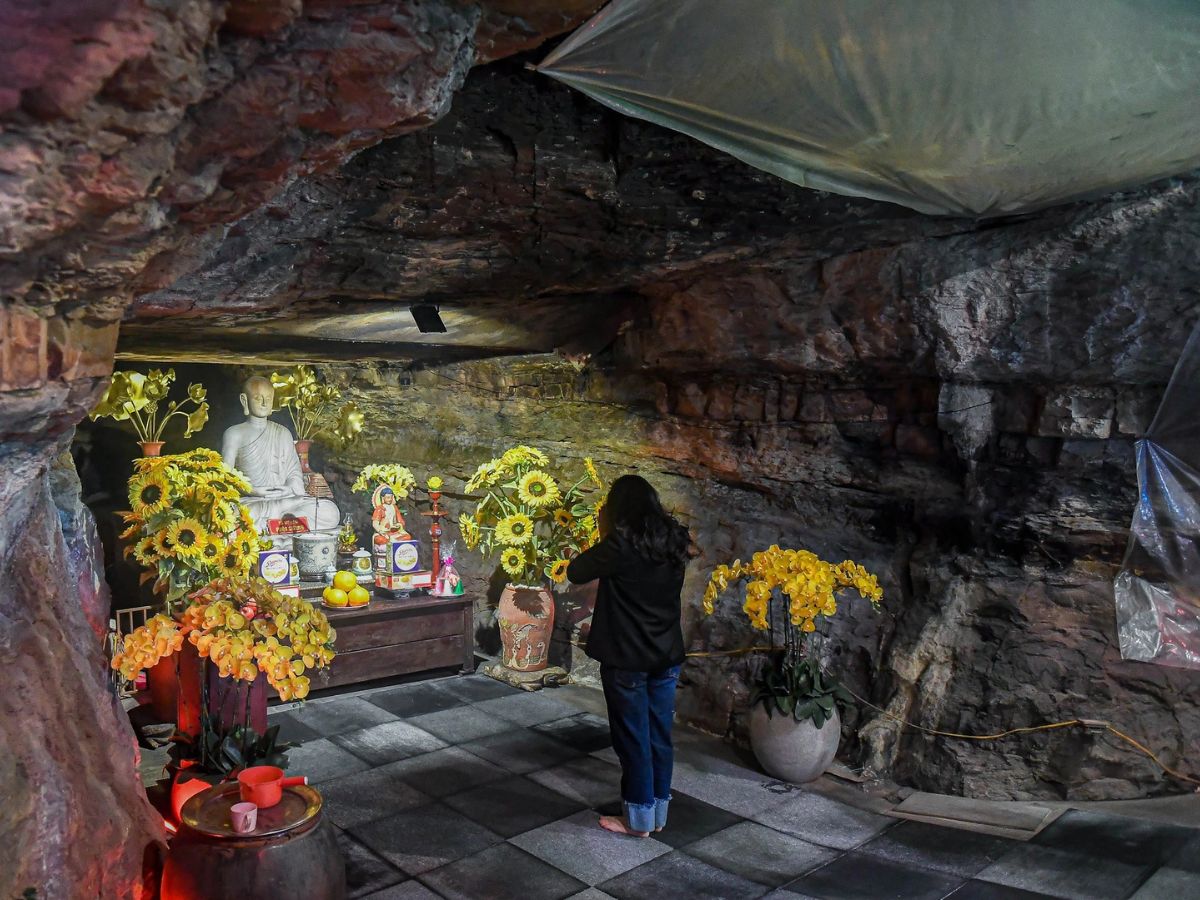
Visitors dress politely when visiting pagodas. (Source: Collected)
When visiting Hang Pagoda Hai Phong, visitors not only come to worship but also to feel the tranquil atmosphere and the ancient cultural values of the old pagoda in the heart of the port city. To make the spiritual journey more complete and meaningful, preparing attire, behavior, and adhering to temple regulations is extremely important.
To make the visit to Hang Pagoda Hai Phong complete, visitors should pay attention to their attire and attitude when coming to this sacred place. Attire should be modest and polite, such as long-sleeved shirts and decent long pants; avoid wearing overly short or brightly colored clothing.
Within the pagoda grounds, maintain a solemn demeanor, limit loud talking, laughing, or causing noise. Participating in Buddhist rituals should be performed according to traditional customs with reverence.
Some other important notes include not bringing strong-smelling food, not smoking, and when asking for blessings, show sincerity and gratitude. If you wish to take photos in the worship area, you should ask for the management's permission to respect the sacred space.
At Du Hang Pagoda (Hang Pagoda), ideal photo spots include the ancient stupa garden, the bell tower, the solemn Tam Quan gate, and the shady green trees in the courtyard, creating a perfect backdrop for souvenir photos.
5. Suggestions for combining cultural tourism when exploring Hang Pagoda Hai Phong
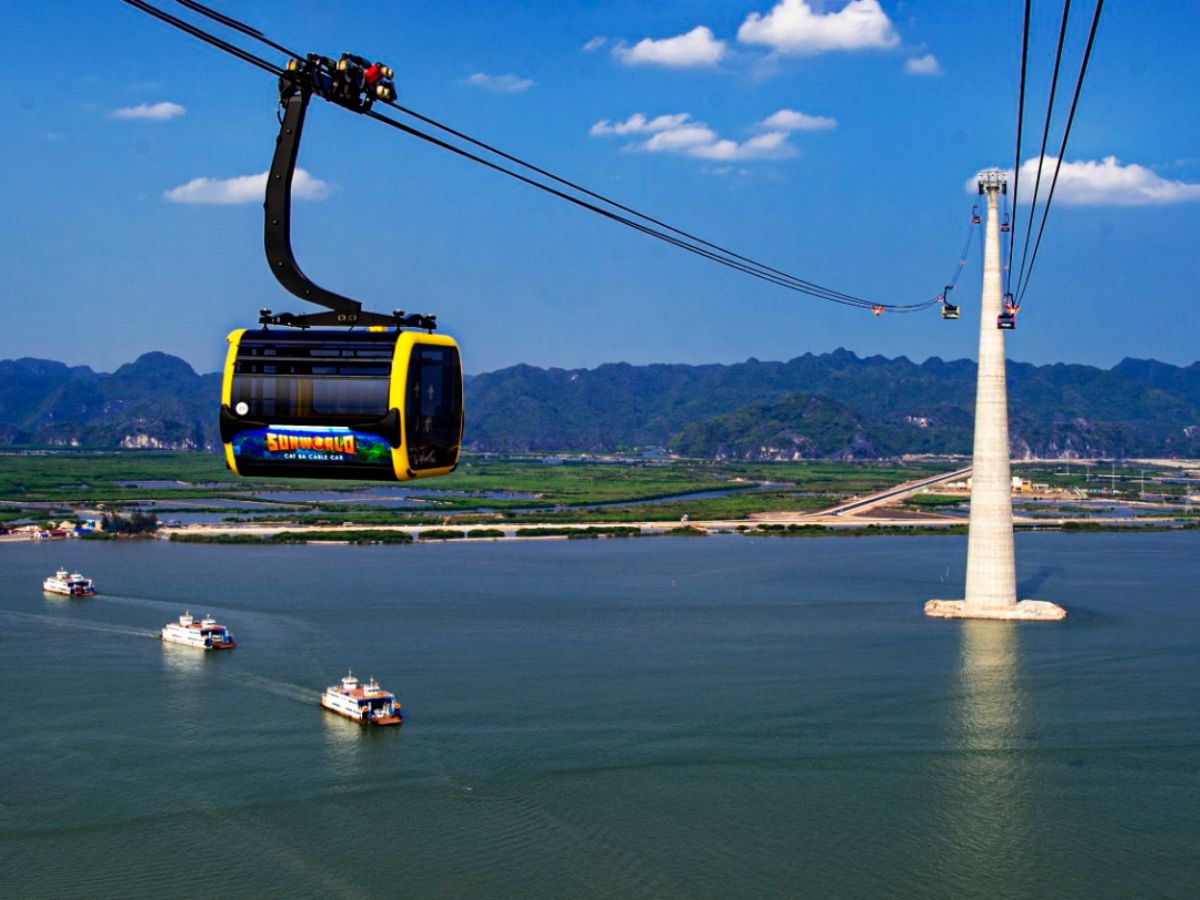
Cat Ba tourism is convenient with Sun World cable car. (Source: Collected)
Combining visits to Hai Phong's Hang Pagoda with cultural and coastal tourist destinations is a great choice to fully experience the spiritual beauty and nature of the port city. This journey offers a balance between the tranquility and peace at the Buddha's gate and the vibrant, expansive atmosphere of the Do Son – Cat Ba coastal region.
An ideal itinerary for exploring culture and spirituality in Hai Phong can begin in the morning at Hang Pagoda (Du Hang). After 1-2 hours of visiting, praying, and worshipping, tourists can quickly travel by taxi or bus to Do Son in just 30-40 minutes.
At Do Son, Hang Pagoda (Coc Tu) promises a unique experience with its 25m long natural cave architecture and sacred space harmonizing with the sea and mountain scenery. After visiting, you can enjoy fresh seafood at seaside restaurants, relaxing while exploring local cuisine.
If the itinerary lasts for 2 days and 1 night, tourists can continue their journey to Cat Ba Island. It takes less than 15 minutes by Sun World cable car from the mainland to the island, where you can swim, kayak, explore caves, or visit Cat Ba National Park, enjoying the wild natural beauty combined with seaside relaxation.
Hai Phong's Hang Pagoda and Do Son's Hang Pagoda offer tourists a unique cultural and spiritual experience amidst a peaceful atmosphere. In 2025, visiting these two pagodas is an opportunity to learn about their historical values, characteristic architecture, and immerse yourself in traditional festivals. This is definitely an ideal stop for your journey to explore Do Son and Hai Phong.

